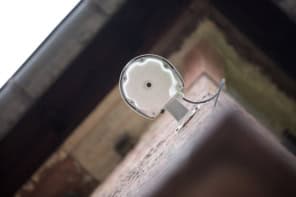Comet Giacobini-Zinner, a fairly frequent visitor to the inner solar system, was captured by the Kitt Peak 0.9 m telescope on 31 October 1998 (Credit: N A Sharp/NOAO/AURA/NSF)
By Tushna Commissariat
If you have some time to spare tomorrow evening and especially if you live anywhere in the UK and Northern Europe, then I would suggest putting together a picnic supper and going out to the park or an open space from where you have a clear view of the sky because the heavens might just be putting on quite a show! This Saturday on 8 October, the Draconids meteor shower will be at its peak – and scientists predict that we might be in for a meteor storm!
As the Earth revolves around the Sun during the year, it passes through clumps of comet dust – some of which fall towards the Earth’s surface and burn up in the atmosphere creating meteor showers. The Draconids are dust left behind by the periodic comet 21P/Giacobini-Zinner. Generally, the Draconids that peak from around the 8 to 11 of October are a quiet affair, but every now and then the Earth travels through a particularly dense patch of dust. This year, researchers predict that the shower might be much stronger than normal. Indeed, you could see up to 10 meteors a minute, which is well worth camping out for on a chilly autumn evening. While the shower will begin tonight on 7 October and last until 11 October, the peak is set to occur on 8 October at 9 p.m. (20:00 UT), and activity is expected to begin at about 5 p.m. (16:00 UT) so probably the best views for the UK will be just after sunset.
Unfortunately, as the Moon is waxing right now, there will some bright moonlight, so try to keep the Moon behind you by keeping your gaze directed towards the northern half of the sky. Here are a few more pointers for observing meteorite showers:
• Look up a star chart before you embark, or at least pull it up on your phone app so that you can identify the constellation Draco. The shower is called the Draconids because the meteorites look as if they originate from the Draco constellation.
• Keep your eyes open – even the slowest shooting star streaks across the sky in seconds. This is literally a blink-and-you-miss-it situation!
• Take along a reclining chair or a picnic blanket so that you can comfortably lie on your back and not have a crick in your neck to deal with come Sunday morning. And wrap up warm!
• Even if you are in possession of a good pair of binoculars or a telescope, do not bother – meteorite showers are best seen with the naked eye thanks to how quickly they zip across the sky.
• Wherever you are watching the sky from – be it your back garden, the neighbourhood park or from the top of a multi-storey building – try keep away from all sources of light. This means not only bright city lights, but also not flashing a torch in someone’s face once their eyes have become used to the dark. Take along a few coloured plastic sheets – most sheets are red or blue – and fold it over your mobile phone, tablet and even your torch bulb and just secure it with an elastic band.
While just going out and enjoying the sight is lovely, some of you might want to record your observations and contribute your data for a number of global organizations that collate information about meteorite shower from amateur astronomers the world over. If you know how to professionally record your observations, then you can send your data to the International Meteor Organization which also provides you with information on how to do this. In the UK, the British Astronomical Association (BAA) is happy to receive data from any individual or society wherever they are in the world. Their website contains information on how to submit data and some handy maps and charts.
Lastly, with today’s <a href="http://twitter.com/“>Twitter generation, it is of course possible to tweet your data about the meteors you see. The Meteorwatch website is hosting a “Twitter Meteor Map”.
Tweet your observations using one of the hashtags #meteorwatch, #bbcstargazing, followed by your postcode, your country code (UK, US, etc) and, optionally, the meteor count. An example on their website reads – #meteorwatch SW5 0TR uk 1.
If you do happen to take any pictures of the showers do send them in to <a href="http://physicsworld.com/“>Physics World at pwld@iop.org or tag them on our official Facebook page here.
And lastly, don’t forget to do your special no-rain dance/good-weather chant at least an hour before sunset tomorrow to ward off all the rain clouds and mists that plague any starry sky! Then lie back and enjoy the view.



